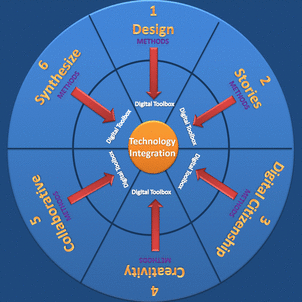digitalsandbox
- Digital Sandbox
- About Mike King
- The Web 2.0 Generation
- The ePub Generation:
- Cyber Bullying Prevention
- Art of Digital Storytelling
- Creative Commons
- New Paradigms
- Common Core Transition
- Collaboration Tools
- Language Literacy Tools
- Adopting Technology
- Flipped Classroom
- Flipped Classroom Design
- Scaffolding Flipped Classrooms
- Avatars Flipped Classroom
- Flipped InfoGraphic
- 21st Century Teaching
- Knowledge Management
- STAR
- Acceptable Use Policy
- Live Poll
THE INFORMATION AGE TO THE CONCEPTUAL AGE
A Mike King Portfolio; A 32 Year Real Life Experience with Technology
1977 - 1980
The Early Years, Technology as Exploration
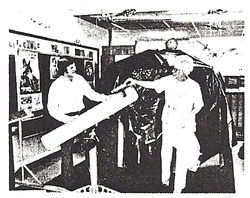
Upon receiving his Bachelors of Education from Cameron University in 1977, Michael D. King obtained his first professional position as a gifted educator at Lindsay Public Schools, in Lindsay Oklahoma. Here he explored the integration of science curriculum through project based applications in astronomy, rocket science and aerospace engineering. In the summer of 1978 he attended a two week aerospace summer institute where he developed ideas for enhancing classroom experiences for gifted students and wrote the first gifted education proposal for the district.
During the fall of that year he constructed a classroom planetarium out of cardboard boxes and developed a regional gifted and talented workshop for integrating science and technology. He elicited the support of NASA and Southwestern Bell as key presenters as well as noted scientific researchers from the University of Oklahoma. During this time he was acknowledged by the State Department of Education for science and technology integration in a state circulated educational newsletter. (See Oklahoma Educator May 1979)
During the fall of that year he constructed a classroom planetarium out of cardboard boxes and developed a regional gifted and talented workshop for integrating science and technology. He elicited the support of NASA and Southwestern Bell as key presenters as well as noted scientific researchers from the University of Oklahoma. During this time he was acknowledged by the State Department of Education for science and technology integration in a state circulated educational newsletter. (See Oklahoma Educator May 1979)
Technology History 1997 - 1978
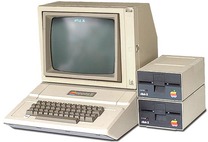
In April of 1977 the Apple II was introduced. The Apple II was one of the first computers with a color display, and it had the BASIC programming language built-in, so it was ready-to-run right out of the box. The Apple II was probably the first user-friendly system. The most important feature of the Apple II was its eight expansion slots. No other computer had this flexibility or expansion possibilities. In 1978 the 5.25-inch floppy disk became an industry standard and Apple introduced Apple DOS 3.1, the first operating system for the Apple computers. Mike purchased his first personal computer the Apple IIe in 1981.
1983 - 1984
Data Decision Making and the Main Frame Computer
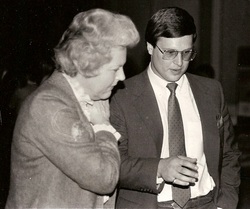
In January of 1981 Mike King accepted his first principal position at the age of 26. In the spring of 1983 Mike King began to explore ways to use technology as a method to track instructional data to enhance student performance. While attending the graduate school of education at the University of Oklahoma he began to develop ideas on curriculum mapping as they tie to effective instructional practices.
During a period of one year he corresponded with David Berliner who published a single chapter for ASCD entitled "The Half-Full Glass: A Review of Research on Teaching." From Berliner’s work and extensive research from M. Wittrock "Handbook of Research on Teaching", he developed a thesis on Curriculum Analysis Monitoring System, better known as CAMS.
Through time purchased on the University main frame computer, he constructed the master calculation principles to measure the use of instructional time as it applied to a guaranteed viable curriculum. CAMS became the first computerized data management accountability system for monitoring student performance through the mastery of specific outcomes. The system was copyrighted in 1984 by King and Idleman.
On February 5, 1985, Mike was invited by the Oklahoma House of Representatives on Education to provide information on the CAMS project results as a possible future system in educational accountability.
On February 5, 1985 Mike is invited by the Oklahoma House of Representatives on Education to provide information on the CAMS project results as a possible future system in educational accountability.
During a period of one year he corresponded with David Berliner who published a single chapter for ASCD entitled "The Half-Full Glass: A Review of Research on Teaching." From Berliner’s work and extensive research from M. Wittrock "Handbook of Research on Teaching", he developed a thesis on Curriculum Analysis Monitoring System, better known as CAMS.
Through time purchased on the University main frame computer, he constructed the master calculation principles to measure the use of instructional time as it applied to a guaranteed viable curriculum. CAMS became the first computerized data management accountability system for monitoring student performance through the mastery of specific outcomes. The system was copyrighted in 1984 by King and Idleman.
On February 5, 1985, Mike was invited by the Oklahoma House of Representatives on Education to provide information on the CAMS project results as a possible future system in educational accountability.
On February 5, 1985 Mike is invited by the Oklahoma House of Representatives on Education to provide information on the CAMS project results as a possible future system in educational accountability.
- Reference Archive: Curriculum Analysis Monitoring System
- Reference Letter: State Superintendent of Public Instruction, Dr. John M. Folks
- Reference Letter: University of Arizona, Dr. David Berliner, College of Education
- Reference Letter: University of Oklahoma, Dr. Thomas H. Gallaher, College of Education
1986
Technology, Documentaries and Live Broadcast
In 1986 while holding a principals position in Washington Oklahoma, Mike King is accepted to the H.H. Herbert School of Journalism and Mass Communications at the University of Oklahoma. In the fall of that year he takes one course in documentary filmmaking where he is commissioned by the Goddard Youth Foundation to produce an environmental documentary. The documentary uses the first digital special effects features of the Macintosh.
|
Through trial and error, Mike connected a video expansion card to his Macintosh and created a video special effects graphic generator. He established a connection between the Macintosh computers video/ audio outputs to a VCR tape deck and generated rudimentary title text, and animated graphics. The special effects was recorded through a playback of the first VCR to a second VCR. A section of his first documentary using this method entitled "The Flower that Shattered the Stone," sung by Olivia Newton John, can be seen on the above. This was the first generation attempt of what would become known, in the not so distant future, as iMovie.
|
|
In six years he will repeat same procedures to produce a live simulcast broadcast of the 1992 presidential and state election returns at K101 studios. Thus creating the first live TV cable Video Broadcast in Woodward, Oklahoma.
Technology History
The Macintosh, introduced in 1984, was the first personal computer to use a graphical user interface and a mouse. A graphical user interface is a computer display format that allows the user to select commands, call up files, start programs, and do other routine tasks by using a mouse to point to pictorial symbols (icons) or lists of menu choices on the screen as opposed to having to type in text commands.
Napster Defines Creative Commons

Readers and viewers alike should note that when the film short "The Flower that Shattered the Stone," was made digital media was nonexistent. In addition, Napster had not hit the file sharing scene and copyrights on music were not a preconceived notion since the emergence of dubbing sound over home video was still in the experimental stages.
When the software for music file-sharing program Napster first emerged in 1999, it caused a furor in the entertainment industry. Issues regarding copyrights and artist compensation were hotly debated among record company executives, musicians and listeners. What began as a small forum for sharing and trading music tracks eventually revolutionized the way music is promoted, sold and distributed?
When the software for music file-sharing program Napster first emerged in 1999, it caused a furor in the entertainment industry. Issues regarding copyrights and artist compensation were hotly debated among record company executives, musicians and listeners. What began as a small forum for sharing and trading music tracks eventually revolutionized the way music is promoted, sold and distributed?
1991 - 1996
Technology Permeates a New Educational Beginning
From 1991 to 1996 Mike King, as a middle school principal, worked with Apple to establish the first two networked Macintosh computer labs at Woodward Middle School. (1991-1992) He also implemented one of the first Mac School administrative networks for obtaining student information. The student information software package at Woodward Middle School was designed to enhance scheduling, attendance, electronic grading and scanning, and transcript reports. The program also was design to support the update of records for guidance, health, and library programs. (1991-1996)
|
Technology education was also at the forefront of his administrative efforts. The central purpose for creating the technology education program was to expose students to 21st Century skills while providing real life work related applications. The program was visited by State Superintendent Dr. Roy Peters who validated in a news release that, "This technology education program has a reputation for being one of the best in the state." In the spring of 1994 the program was awarded the state's Program of Excellence in Technology Education.
|
The school went on to be recognized by the U.S. Department of Education as a National Blue Ribbon of Excellence School. Woodward Middle School; Woodward, OK (1994 - 1996)
- Reference Letter: House of Representatives, Frank D. Lucas, Member of Congress
- Reference Letter: Office of the Governor, Frank Keating, Governor of Oklahoma
Technology History: "Let the Browser Wars Begin" (1991 - 1994)

In 1991 Apple introduced the Classic II, First Quadras, and First PowerBooks. The sheer power, of the Quadra left 1990's "wicked fast" IIfx in the dust. They marked the wave of the future. The first Low End Mac email list, Quadlist, was created for Quadra users.
These were the same years that Mosaic was introduced as the first commercial software that allowed graphical access to content on the internet. It was originally founded under the name, Mosaic Communications Corporation, on April 4, 1994, the brainchild of Jim Clark. The company's first product was the web browser, called Mosaic Netscape 0.9, released on October 13, 1994. This browser was subsequently renamed Netscape Navigator, and the company took the 'Netscape' name on November 14, 1994. Mosaic was available for several operating systems such as the Mac OS, and Windows. It was also the year that the main U.S. Internet backbone traffic began routing through commercial providers.
These were the same years that Mosaic was introduced as the first commercial software that allowed graphical access to content on the internet. It was originally founded under the name, Mosaic Communications Corporation, on April 4, 1994, the brainchild of Jim Clark. The company's first product was the web browser, called Mosaic Netscape 0.9, released on October 13, 1994. This browser was subsequently renamed Netscape Navigator, and the company took the 'Netscape' name on November 14, 1994. Mosaic was available for several operating systems such as the Mac OS, and Windows. It was also the year that the main U.S. Internet backbone traffic began routing through commercial providers.
1994 - 2002
The Beginnings of a Writer's Block
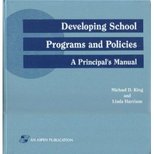
On December 22 of 1994, Loretta Stock, an acquisition editor for Aspen Publishers, sought a book contract with Mike King and Linda Harrison. A prospectus was drawn up and Mike began writing for Aspen in 1995 while transferring to a new position in Enid, Oklahoma. Mike wrote for Aspen until the summer of 2002 when his royalty rights were sold to LRP Publications. Titles most noted from the publication of Developing School Programs and Policies "The Virtual School House" and “The Critical Task of the School Principal” in which Mike and Linda Harrison mirror the importance of integrating technology into the classroom.
Technology History:"Bursting the Bubble (1994 - 2001)
Between 1994 and 2001 hyperlinks between web pages began with the release of the WWW to the public. In 1993, begins as what will be describe as the emergence of Web 1.0. This emergence of information sharing will continue to prosper until the "bursting of the dot com bubble” in 2001. Mike did not begin to explore the idea of hyperlinks until 1996 after he became principal at Waller Junior High School and created the school's first website.
1996 - 2005
Experiencing and Procuring Web 1.0 Applications
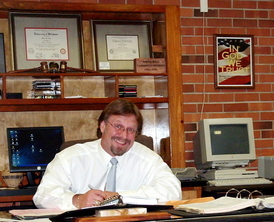
Mike continues to harbor his Macintosh LC
In the summer of 1996 Mike King was hired as a Junior High principal. Well aware that the future of technology for public schools was on the horizon, his attention was focused on improving the direction of the school. It was during this time that he engaged in dialogue with a freshman student who was shouldering a special concern; she was clearly adamant in finding resolution. She escorted him to the school library where she showed him one computer, which was hooked up to the Internet by a single phone line.
She further informed him that this was the one and only computer in the school that allowed students’ access to the Internet; she insisted that the current “technology” being offered did not facilitate the needs of the six hundred plus students currently attending school. At that moment, a vision for the future originated. From one student's concern for her fellow students and the technological needs of the school, a plan emerged. One year later, students were given the availability of a computer in every classroom, twenty computers in the library, and twenty-two computers in the computer lab -- all of which had Internet access to the World Wide Web.
It was in these years from 1996 to 2005 that connectivity occurred through the use of what is now known as Web 1.0 resources. From these resources other technology programs were developed by Mike King. Some of these technology integration programs are listed below.
She further informed him that this was the one and only computer in the school that allowed students’ access to the Internet; she insisted that the current “technology” being offered did not facilitate the needs of the six hundred plus students currently attending school. At that moment, a vision for the future originated. From one student's concern for her fellow students and the technological needs of the school, a plan emerged. One year later, students were given the availability of a computer in every classroom, twenty computers in the library, and twenty-two computers in the computer lab -- all of which had Internet access to the World Wide Web.
It was in these years from 1996 to 2005 that connectivity occurred through the use of what is now known as Web 1.0 resources. From these resources other technology programs were developed by Mike King. Some of these technology integration programs are listed below.
Getting Connected
Mike was awarded an Oklahoma State Senate proclamation for participation in Operation School Net. The broadband network was the first to be installed within the school district which provided the library and computer labs with connectivity to the worldwide web. (1998)
- Reference Letter: Senator Robert Milacek on Operation School Net
The Development of E-Portfolios
In 1999 Mike developed and wrote a school wide career based program entitled T.O.P.S that includes the implementation of student career portfolios, vocational technology education programs, summer career institute, job shadowing, parent transition nights, resume development, and the implementation of a career based library. The Program was recognized by Southwestern Bell, and National Technology Resources as one of the top three career based programs in Oklahoma. (1999)
The E-Mail Experience and Community Education
Mike wrote and received a Community Education grant to promote the use of technology within the community. The evening program invited members of the community to become familiar with the use of technology such as e-mail, search engines, and website development.
- Reference News Article: Through the Window Community Education
Development of School Website
Mike developed the first school wide website for interactive learning and was selected by USA Today Education “Best Bet” as one of the top web sites in the Nation. The website included a homework hotline for students to access their homework assignments. The site also featured the first interactive website for extended learning opportunities. These features became popular through the use of e-mail as a communication tool. (1999)
- Reference Article: Waller is USA's Best Bet
From 1999 to 2004 Mike wrote three technology grants which awarded over $35,000.00 in additional funding to develop and implement a web based interactive learning program for junior high students. (1999 - 2001) He also implemented and wrote procedures for the first real time assessment electronic grading program for the district. The real time Pinnacle assessment program included the development of tracking student discipline, grades, and access information for teachers and parents. (1999 - 2004)
For his efforts in technology innovations, Mike was awarded as a finalist for the 2005 Oklahoma Medal of Excellence Award in Educational Administration (2005) and became the finalist for the 2005 Association of Professional Oklahoma Educators Foundation Award in Educational Administration.
For his efforts in technology innovations, Mike was awarded as a finalist for the 2005 Oklahoma Medal of Excellence Award in Educational Administration (2005) and became the finalist for the 2005 Association of Professional Oklahoma Educators Foundation Award in Educational Administration.
References
2006 - 2008
The Emergence of Web 2.0 Applications & Data Management
In 2006 Mike took a position as director of technology. These were the innovative years. During these years he wrote a paper on the use of horizontal articulation that applied Interoperability Framework to SIF software standards. The paper recognized five distinct tenets as key elements in Student Tracking and Reporting (STAR) design. These five tenets provided information on how an individual district or state departments of education implement an infrastructure to monitor real-time assessment progress toward the improvement of student learning.
The paper emphasized the use of horizontal articulation to manage and report to the local district and /or State Department of Education by complying with SIF and Open-Standards’ web-based tools. In the paper he provided information on how a school Interoperability Framework (SIF) Specification a "set of common definitions for school data and a set of rules for how the data can be shared by eliminating silos of isolated information.” He stipulated how data could be broken up into zones managed by a central Zone Integration Server (ZIS). The ZIS then would send out and receive data from all of the different SIF-enabled Application Agents. (See Website Reference)
From 2006 to 2007 he worked with Dell Corporation engineers and Southwestern Bell Communications to move the current broadband services within the district from three megabits to a hundred megabits. It was also during these years that Mike King wrote his first technology vision essay entitled "The Synergy For Virtual Learning; A Paradigm Shift For The Future” and designed the first long range district instructional technology plan.
The paper emphasized the use of horizontal articulation to manage and report to the local district and /or State Department of Education by complying with SIF and Open-Standards’ web-based tools. In the paper he provided information on how a school Interoperability Framework (SIF) Specification a "set of common definitions for school data and a set of rules for how the data can be shared by eliminating silos of isolated information.” He stipulated how data could be broken up into zones managed by a central Zone Integration Server (ZIS). The ZIS then would send out and receive data from all of the different SIF-enabled Application Agents. (See Website Reference)
From 2006 to 2007 he worked with Dell Corporation engineers and Southwestern Bell Communications to move the current broadband services within the district from three megabits to a hundred megabits. It was also during these years that Mike King wrote his first technology vision essay entitled "The Synergy For Virtual Learning; A Paradigm Shift For The Future” and designed the first long range district instructional technology plan.
Classrooms Without WallsIn the video to the left entitled "Classrooms without Walls" are narrated excerpts from the Mike's vision essay on classroom use of technology. The video was created in 2006 to promote virtual learning opportunities for students. The video is again edited in July of 2010 to promote his Podstock presentation on "Designing Highly Engaging Digital Lessons." He also began to experiment with the use of avatars in the design of interactive lessons. You can view some of these creations at Avatars on Capzles.
|
|
Designing Digital LessonsIncluding working with the development of the districts infrastructure, and implementing a student management system, Mike King became involved in various ways to integrate technology into the classroom. Starting in the fall of 2006, in anticipation of the district-wide implementation of interactive whiteboards, Mike went beyond offering classes to his media specialists and nearly 500 teachers on how to integrate technology in the classroom and design interactive lessons. He also called on at-risk students, enrolled in the district’s alternative high school, to help teachers make the most of their new whiteboards, especially by incorporating various forms of digital media when using them and created a new concept called media kits.
|
|
The media kits were developed and then stored on a media server. The video above left is produced by Mike King using programmed avatars to explain some of the principles behind interactive lesson design.
- See ISTE Article by Mike King: Critical Thinking, Problem Solving, and Decision Making)
- Podcast by Mike King Promoting the 2006 Statewide Oklahoma Technology Conference
- On February 7-8, of 2006 Mike King is provided the opportunity to make four presentations at the OTA Conference in Oklahoma City. Posted below are the PowerPoint slides and topics introduced during the conference. The Keynote for this event was, Hal Davidson who later became involved as a scheduled presenter for the ODCP on Copyright Laws.
STAR Discovery Educator
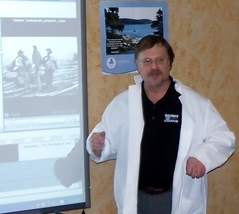
In January of 2006 he joined the ranks of becoming a STAR Discovery educator and began hosting regional “Evening of Discovery” seminars. The seminars provided a means where educators and administrators could learn the ins and outs of Discovery Education, a technology resource to aid teaching and learning (See News Release Archive). In July of 2006 he was invited by Discovery Education to attend a special DEN focus group at the NEC Conference in San Diego. The focus group met on July 5th with a Discovery Education production development team to provide design ideas for renovations to their existing website. (See Web Development Evaluation Template)
During the next few months starting in October of 2006 he wrote two very important proposals. The first proposal, "Integrating Technology in Developing Assessment Based Interactive Lessons", provided the first of several ideas that led to the second proposal entitled "The Oklahoma Digital Centennial Project. In the podcast below Mike is heard giving a testimonial on his first statewide technology integration workshop entitled "Three Days of Discovery."
During the next few months starting in October of 2006 he wrote two very important proposals. The first proposal, "Integrating Technology in Developing Assessment Based Interactive Lessons", provided the first of several ideas that led to the second proposal entitled "The Oklahoma Digital Centennial Project. In the podcast below Mike is heard giving a testimonial on his first statewide technology integration workshop entitled "Three Days of Discovery."
Operation Freedom CallIn October of 2005 Mike King developed ties with Freedom Calls network, a not-for-profit group that organizes teleconferences for soldiers overseas. He established links between community families at home over a satellite network that the foundation had set up under authority of the Secretary of the Army. The video call were free connections through the Internet and Freedom Calls Satellite Network to Iraq. In the video to the left the Watkins family is given an opportunity to visit with their father in Iraq as it was reported by fox news.
|
|
- News Article Reference: Family visits soldier in Iraq over video link through school
- News Article Reference: Talkback TV links soldier to his family
Digital StorytellingDuring the fall of that year Mike King teamed with Wesley Fryer to create the Oklahoma Digital Centennial Project which later became “Celebrate Oklahoma Voices” (See Participant Responses). On October 8, 2007 he post his first vodcast on the Classroom 2.0 Ning site promoting the Oklahoma Digital Centennial Project. The ODCP provided a three day workshop for teachers on the use of digital tools to create digital stories to preserving Oklahoma's history. To the right is Mike's first digital story which was written, narrated and produced by him for the Oklahoma Digital Centennial Project.
|
|
- Reference Promotional Flyer: Oklahoma Digital Centennial Project, Three Days of Discovery
- Also See Old West Digital Stories by Mike King: Old West Podcast
|
Social networking was well on its way as Mike started his first independent blog in December of 2007 entitled The Digital Sandbox which to this day, continues to promote technology integration in the classroom. In 2007 Mike began researching and writing on Web 2.0 applications in the classroom. He developed a short video on the definitions associated with Web 2.0 and uploaded it to Teacher Tube. Within the first week the video is featured and receives over 500 views. To date the video has been viewed over 31,400 times. Over the next four years Mike produced over 45 educational short videos for integrating technology into the classroom.
|
|
Technology History: "Welcome Web 2.0" 1997 - 2012
In 1997, AOL Instant Messenger and SixDegrees.com were launched. This was the year instant messaging became popular and it was the first time internet users were able to create a profile and friend each other. Friendster was the pioneer of social networking. In its first three months, the social networking website acquired 3 million users, amounting to 1 in 126 internet users being members at the time. Friendster served as the launching point for the widely popular MySpace, who cloned Friendster and launched after just 10 days of coding. In the following years, other social networking websites like Classmates.com, LinkedIn and Tribe.net started to pop up, including what was to be the most popular social networking website in internet history: Facebook.com. It was launched in 2004 with the intent to connect U.S. college students, starting with Harvard College. In its first month, over half of the 19,500 students signed up. After gaining popularity, Facebook opened its registration to non-college students, and in 2008, Facebook surpassed MySpace as the leading social networking website.
2007 - 2011
Mobile Leaning Environments and The New Alexandrian's
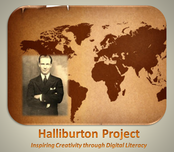
In 2008, Mike moved to Dodge City, Kansas, to start a new position as principal of Dodge City Middle School, where he is currently actively involved in the development of new application ideas for instructional technologies. In the fall of 2008, he teamed with Jesse West, a technology teacher at the same school and created the Halliburton Project.
The Halliburton Project utilizes chapters from Richard Halliburton's "Book of Marvels" as students are assigned sections from the book. Students are then taught the essential tools for creating digital stories from places that Richard Halliburton had traveled and wrote about.
The Halliburton Project utilizes chapters from Richard Halliburton's "Book of Marvels" as students are assigned sections from the book. Students are then taught the essential tools for creating digital stories from places that Richard Halliburton had traveled and wrote about.
Once a student has completed their digital story, and score exemplary on their performance rubric they can post their digital story to TeacherTube. The students then use the imbedded code generated from their TeacherTube posting into an open place marker in Google Earth. The place marker is then uploaded to the Halliburton Project Wiki as a reference to guide to places traveled by Halliburton. In essences, he established a means for students to create information as a virtual tour within Google Earth.
|
In the fall of 2008, Mike designed the Halliburton Project for gifted students at Dodge City Middle School. The purpose for the project is to allow students to explore the latest technology tools and solutions available to help them build knowledge of 21st Century learning. The project provides multiple examples of media-rich projects, and allows students to experience the world of podcasting, vodcasting, blogs, wikis, web 2.0, digital storytelling, and Google Earth KML files.
|
|
- Reference Wiki Site by Mike King: Halliburton Project
- Reference Blog Post by Mike King: The Halliburton Project
- Reference PowerPoint Presentation by Mike King: Project Based Learning
Summer Institute of Technology
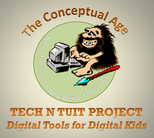
During the summer of 2009, he again teamed with Jesse West to establish a state wide institute for technology. During this time he created his first interactive website entitle TechNTuit.
He designed the "TechNTuIt” website as a reference guide for participants who attend the summer institute. The central idea behind the portal is to inspire educators to create social networks of learning for classrooms across the globe.
He designed the "TechNTuIt” website as a reference guide for participants who attend the summer institute. The central idea behind the portal is to inspire educators to create social networks of learning for classrooms across the globe.
|
In his second year at the school he began a SMART board initiative. Within a two year period, over 85% of the classrooms at the school have SMART Boards, wireless access points installed, classroom responders distributed and every teacher with a laptop. In 2009 he launched Cardinal Spaces, a school work wiki where teachers could post and review information on school operations. The School wiki included methods for tier interventions, mastery checks, PLC meetings, the posting of curriculum goal statements, and communicated team decision items based on data retrieval. The site statistics during the first year and a half sky rocketed to a staggering 34,000 hits.
|
|
2010 KGTC Administrator of theYear
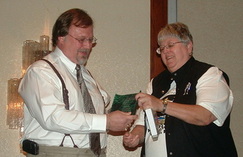
In 2010 he created a website entitled the digitalsandbox to promote technology integration into the Common Core using NET standards. He began to make several appearances at Podstock and is invited to make regional and state presentations for the Kansas Gifted and Creative Association, while also receiving the 2010 Administrator of the Year Award. Pictured above left, Mike King is receiving his award at the KGTC (Kansas Gifted, Talented and Creative) state conference held in Wichita, Kansas.
The Conceptual AgeBetween 2009 and 2011 Mike worked to develop three education technology integration models. Each of the models is built around his original 1995 foundational model of standard based instructional delivery systems. The foundational model of 1995 fosters the idea that students should be exposed to technology using core standards of learning through thematic units that support authentic assessments.
The first model "The Conceptual Model" incorporates Daniel Pink’s conceptual suppositions into six separate traits, each trait being applied in conjunction with one or the other or as a separate element. The conceptual model is procured through the relevance of digital tools as they are applied to one of the following six traits:
|
- understanding the design of digital content as it is embedded within a lessons,
- allowing students to use technology to create digital stories,
- understanding the importance of ethics and digital citizenship when experiencing a web found learning environment.
- provide personal learning environments where students can become creators of knowledge through the remixing of content using open source Web2.0 applications
- provide time for students to synthesize concepts by comparing strands of ideas and to create new elements of thought,
- provide meaning to educational opportunities by allowing students to learn collaboratively,
In his writings he reiterates', "That when students posses any of these six essential elements they will have a greater chance for survival, security, belonging, ego, and the driving spirit necessary to be competitive in their future world."
Technology applied to education is much more than electronic gadgetry located in conventional classrooms. In the "conceptual age", technology grows daily, more powerful in all aspects of life, including commerce, entertainment, business and the workings of government, medicine and defense. Technology applied to education should be a way to assure that education prepares our students for life in the newly developed conceptual age, so that they can compete successfully in the marketplaces of their future.
Technology applied to education is much more than electronic gadgetry located in conventional classrooms. In the "conceptual age", technology grows daily, more powerful in all aspects of life, including commerce, entertainment, business and the workings of government, medicine and defense. Technology applied to education should be a way to assure that education prepares our students for life in the newly developed conceptual age, so that they can compete successfully in the marketplaces of their future.
Common Core Unit Development Model
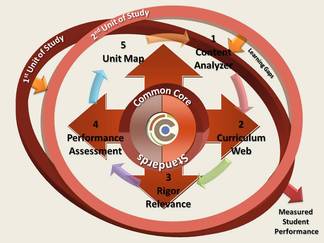
The second model provides avenues to integrate NET standards into the Common Core curriculum using the Common Core Unit Development Tool Kit. The tool kit, developed by Mike King in June of 2011, brings together elements of the Common Core curriculum, assessment, and instruction (of materials and practices) into a coherent, workable unit of study.
n a recent presentation in July of 2011, Mike states, "Most school districts whose states have reauthorized over to the Common Core are faced with moving away from traditional settings of learning which individual subject matter skill sets are taught in isolation. We cannot abandon these new ideas of interrelatedness by isolating 21st Century learning skills. The technology that permeates today’s learning should be deeply embedded within the common core as we create units of study. These are the technology standards that have been clearly articulated by the ISTE/NETS performance indicators for students. When we ensure that the ISTE technology standards are amalgamated within the Common Core, we will create a curriculum that is both challenging and meaningful for 21st Century learners."
The Common Core Unit Development model uses a five stage process of merging the technology NET standards into the Common Core curriculum that include; (1) determining gaps within the existing, by unpacking standards (2) constructing a curriculum web to identify common core standards, (3) applying the rigorous relevance framework to determining real life themes of study through the establishment of an essential question and creating multidimensional tasks, (4) designing performance based assessments for real world applications and (5) developing unit maps that are tied to multiple standards.
n a recent presentation in July of 2011, Mike states, "Most school districts whose states have reauthorized over to the Common Core are faced with moving away from traditional settings of learning which individual subject matter skill sets are taught in isolation. We cannot abandon these new ideas of interrelatedness by isolating 21st Century learning skills. The technology that permeates today’s learning should be deeply embedded within the common core as we create units of study. These are the technology standards that have been clearly articulated by the ISTE/NETS performance indicators for students. When we ensure that the ISTE technology standards are amalgamated within the Common Core, we will create a curriculum that is both challenging and meaningful for 21st Century learners."
The Common Core Unit Development model uses a five stage process of merging the technology NET standards into the Common Core curriculum that include; (1) determining gaps within the existing, by unpacking standards (2) constructing a curriculum web to identify common core standards, (3) applying the rigorous relevance framework to determining real life themes of study through the establishment of an essential question and creating multidimensional tasks, (4) designing performance based assessments for real world applications and (5) developing unit maps that are tied to multiple standards.
The New Alexandrian'sThe third model under development is based on the flipped classroom concept. These ideas of facilitated learning are projected in a 1995 video created by Mike King to harness the ideas of the conceptual age. In the video entitled “Teaching in the Conceptual Age” demonstrates the four necessary characteristics of classrooms in the future as they differ from the industrial age classrooms of the past.
|
|
In his soon to be released eBook, Mike states, "The flipped classroom provides avenues for teachers to become facilitators of learning and move away from the sage on a stage approach to teaching. The facilitator’s role in a flipped classroom changes dramatically in that the teacher becomes a source to students to better use the resources, process information and how to apply the core concepts to real life situations." He also provides additional support for these ideas in the following statements, "In the flipped classroom, students are at the center of knowledge obtainment. They are linked to the process in engaged activities as they are asked to perform authentic tasks. These new instructional strategies are to include being able to facilitate the learning process without influencing student choices."
The emergence of content with the use of available technologies has been consistently in the forefront of his ideas and that technology tools cannot be taught in isolation of content and process. He also established early on in his career that facilitated teaching requires an understanding of how technology relates to the pedagogy and content.
The emergence of content with the use of available technologies has been consistently in the forefront of his ideas and that technology tools cannot be taught in isolation of content and process. He also established early on in his career that facilitated teaching requires an understanding of how technology relates to the pedagogy and content.
|
Mike King states, "In the third model of facilitated classrooms, the creation of digital content through eBooks and application of mobile learning within the flipped classroom, will drive new ideas in future cultures of learners." These ideas are based on what he calls the "New Alexandrians."
Portions of the eBook can be found in web form at Flipping Your Classroom. A full edition of the eBook should be posted on line prior to his next presentation on March 2, 2011 at the Mid-America Association for Computers in Education. |
|
Scribd Publications by Mike King
In 2008 he begins publishing articles on Scribd. In the last two years the published articles have been read over 73,000 times with an average of 85 readers per day. Linked below are some of the surface articles on technology related topics include posted on Scribd.
- How to Create an eBook on iPad
- Flipping Your Classroom With Flip eBooks on iPad
- The Flipped Classroom
- Past or Present Paradigms of Thinking
- Developing Acceptable Use Policy
- Designing Architecture for School Interoperability
- Screen Captures for Teaching
- A Quick Guide to Digital Storytelling
- Technology Vision Mission Statement
- 21st Century Learning Tools
- Educational Technology in the Conceptual Age
- Technology Needs Assessment
- Fair Use Doctrine
- Implications of Distant Learning
- Using Technology to Influence Higher Levels of Learning
- The New Alexandrian Libraries
- Identifying Target Area Goals
- Designing Web 2.0 Thematic Lessons
- Integrating Technology into the Curriculum
